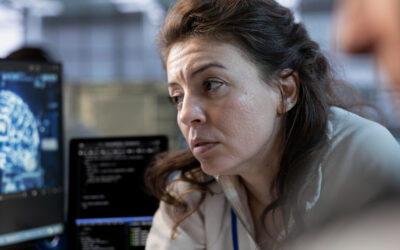JUDEA PEARL
The Father of Causal Reasoning
Judea Pearl was born in Tel Aviv, in the British Mandate of Palestine in 1936. He earned his PhD in electrical engineering from the Technion – Israel Institute of Technology in 1965. Throughout his career, he has been a professor at several prestigious universities, including the University of California, Los Angeles (UCLA), where he has conducted the majority of his research. He has been a professor at several prestigious universities, including UCLA, where he has developed most of his career. Throughout his career, Pearl has received numerous awards and recognitions for his contributions to artificial intelligence, including the Turing Award in 2011, considered the “Nobel of Computing,” awarded for his fundamental contributions to artificial intelligence through the development of probability calculus and causal reasoning. Academically, Pearl earned a degree in Electrical Engineering from the Technion, Israel, in 1960, a Master’s in Physics from Rutgers University, USA, in 1965, and a PhD in Electrical Engineering from Brooklyn Polytechnic Institute, USA, in 1965. He worked at RCA Research Labs and later joined UCLA in 1970, where he is currently a professor in Computer Science and Statistics and director of the Cognitive Systems Laboratory.
Key Contributions:
The first of his essential contributions was Bayesian Networks. Pearl is internationally recognized for developing Bayesian networks, a probabilistic graphical representation that models relationships of uncertainty between variables. These networks are widely used in various applications, from medical diagnosis to spam filtering. These are graphical representations that model probabilistic relationships between variables. They are a powerful tool for:
Probabilistic inference: from observed evidence, we can calculate the probability of hidden variables.
Decision-making under uncertainty: Bayesian networks help us evaluate different options and make optimal decisions in situations where information is incomplete.
Machine learning: they are the foundation of many machine learning algorithms, such as Bayesian classifiers and probabilistic graphical models.
Applications of Bayesian networks in different fields: In Medicine, drug discovery, by helping identify new treatments and understand the mechanisms of action of existing drugs. In medical diagnosis, helping doctors make the most accurate decisions regarding disease diagnosis and treatment, and in epidemiology, by helping model disease spread and evaluate the impact of health interventions.
In Economics, used for public policy analysis, assessing the impact of different economic policies on variables such as employment, inflation, and economic growth; financial market prediction, modeling market dynamics, and making more informed investment decisions; and in microeconomics, to study consumer and business behavior.
In Psychology, in cognitive fields, it involves modeling mental processes like perception, memory, and decision-making; in clinical psychology, helping diagnose and treat mental disorders; and in neuroscience, relating brain activity to behavior.
Another of his fundamental contributions is the Theory of Causality. Pearl has made fundamental contributions to the theory of causality, a field that seeks to understand how events are causally connected. His book “Causality” is considered a seminal work in this field. His most influential work focuses on the theory of causal probability. Pearl developed a mathematical framework to represent and reason about causal relationships between variables. This theory has had a significant impact in fields such as artificial intelligence, statistics, philosophy, and social sciences.
Judea Pearl revolutionized our understanding of causality by developing a mathematical framework that allows us to: distinguish between correlation and causality. Often, two variables may be related, but this does not necessarily mean one causes the other. Pearl provides us with tools to infer causal relationships from observational data. Perform counterfactuals: What would have happened if…? These types of questions, crucial for decision-making, can be addressed thanks to causal models. Intervene in systems: by understanding causal relationships, we can design more effective interventions to modify a system’s behavior.
Pearl also developed Do-calculus: a mathematical formalism for manipulating causal models and answering counterfactual questions, such as “What would have happened if…?”
Impact of His Work:
Artificial Intelligence: Bayesian networks are a fundamental tool in artificial intelligence, enabling systems to make more informed and robust decisions under uncertainty.
Social Sciences: Pearl’s causal theory has had a profound impact on the social sciences, enabling researchers to make causal inferences from observational data.
Medicine: Bayesian networks are widely used in medical diagnosis, allowing doctors to make more accurate decisions regarding patient treatment.
Economics: Causal theory has been applied in economics to assess the impact of public policies and understand causal relationships between economic variables.
Some areas where his work has had a significant impact:
Machine Learning: His ideas on causality have been fundamental to the development of more robust machine learning algorithms capable of extracting deeper insights from data.
General Artificial Intelligence: Pearl has expressed interest in developing artificial intelligence that can reason about the world in a manner similar to humans, which implies a deep understanding of causal relationships.
Social Sciences: His causal models have been used to study complex social phenomena, such as disease spread, the influence of public policies, and discrimination.
Challenges and Obstacles:
Computational Complexity: Inference in complex Bayesian networks can be computationally expensive. Pearl and other researchers have developed efficient algorithms to address this issue.
Knowledge Acquisition: Building accurate causal models requires a deep understanding of the problem domain and the causal relationships between variables.
Interpretability: While Bayesian networks are powerful, they can be difficult to interpret, especially for non-expert users.
Legacy:
Judea Pearl is considered one of the leading theorists in artificial intelligence. His work has had a profound impact on a wide range of fields, from computer science to philosophy. The theory of causality, in particular, has opened new avenues of research and allowed researchers to address fundamental questions about the nature of causality and knowledge.
Pearl is a key figure in the history of artificial intelligence. His work on Bayesian networks and causal theory has provided researchers with a powerful tool to model the world and make informed decisions. His legacy continues to inspire new generations of researchers to explore the frontiers of artificial intelligence.






0 Comments